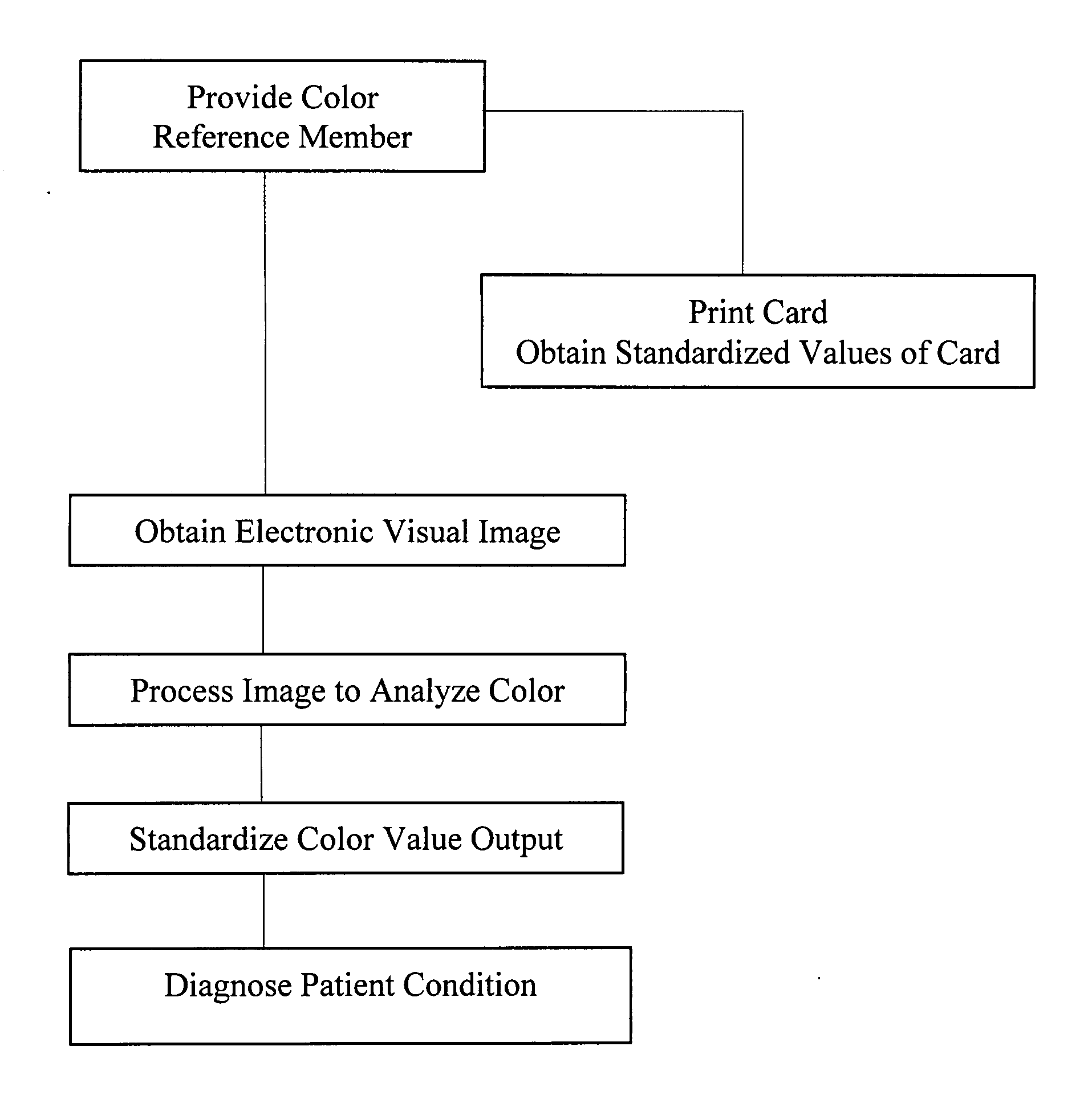Method and apparatus for diagnosing conditions using tissue color
a tissue color and diagnostic method technology, applied in the field of tissue color diagnostic methods and apparatuses, can solve the problems of difficult calibration of colors observed, difficult to attach quantitative measurements, and high cost of known medical instruments, so as to facilitate and improve the diagnosis of patient conditions, reduce color balance, and improve reliability
- Summary
- Abstract
- Description
- Claims
- Application Information
AI Technical Summary
Benefits of technology
Problems solved by technology
Method used
Image
Examples
Embodiment Construction
[0043] In FIG. 1, a flow chart that provides an overview of the process of the present invention is shown.
[0044] The first primary step in the process is to provide a color reference member (such as is shown in FIG. 2-6) that includes at least one reference color thereon. Preferably, the color reference member includes a plurality of colors thereon, such as the three colored areas shown in FIG. 1, which actually, includes five colors if one were to include a white area and a black area as “colors”. Alternately, color reference cards having a plurality of other different numbers of colors can be used, such as the six color, color charts shown in FIGS. 4 and 6, that include six colors in addition to black and white, for a total of eight “colors”.
[0045] Prior to the card being used, but after the card is prepared, it may be useful to obtain standardized values of the colors on the card, since the colors on the card are subject to changes from printing to printing. These color values ...
PUM
 Login to View More
Login to View More Abstract
Description
Claims
Application Information
 Login to View More
Login to View More - R&D
- Intellectual Property
- Life Sciences
- Materials
- Tech Scout
- Unparalleled Data Quality
- Higher Quality Content
- 60% Fewer Hallucinations
Browse by: Latest US Patents, China's latest patents, Technical Efficacy Thesaurus, Application Domain, Technology Topic, Popular Technical Reports.
© 2025 PatSnap. All rights reserved.Legal|Privacy policy|Modern Slavery Act Transparency Statement|Sitemap|About US| Contact US: help@patsnap.com



